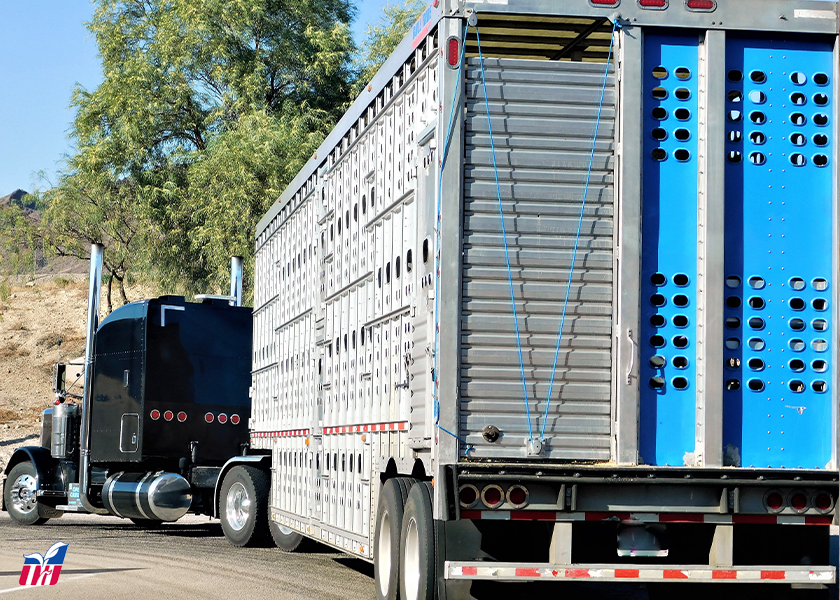Livestock Analysis | August 4, 2023

Price action: October lean hog futures rose $1.025 to $83.075 and nearer the session high. For the week, October hogs fell $2.225.
5-day outlook: The lean hog futures market made a decent recovery from Thursday’s spike to a nearly three-week low. Price action in October hogs will be extra important early next week, as the bulls need to defend chart support at this week’s low of $81.025 to keep the price uptrend alive. The expected seasonal decline in cash hog and fresh pork market prices will make it extra challenging for the bulls to make headway next week. The official CME quote for the lean hog index Wednesday came in 6 cents higher at $105.86. Thursday’s preliminary figure dropped 39 cents to $105.47. The national direct five-day rolling average cash hog quote for Friday is $103.26. The noon report Friday showed pork cutout value fell $1.62 to $114.01, led by a drop in bellies. Movement at midday was 135.55 loads.
30-day outlook: It's likely the hog and pork complex will turn seasonally lower in the near term. However, we think better consumer demand due to aggressive grocer pork features will limit the downside in cash and fresh pork markets in the coming weeks. Still-elevated beef cut prices at the meat counter should also push more consumers toward pork cuts in the coming weeks.
90-day outlook: Seasonals reflect the wholesale pork market’s tendency to peak in price in early August and then decline through much of the fall. Export demand for U.S. pork likely needs to improve in the coming few months to prevent the expected seasonal downturn in pork prices from becoming too large. USDA on Thursday reported U.S. pork sales of 17,800 MT for 2023 were down 30 percent from the previous week and 25 percent from the prior 4-week average. However, shipments of 27,100 MT were up 14 percent from the previous week and 4 percent from the prior 4-week average. The recent surge in the U.S. dollar index won’t help to improve the U.S. pork export outlook in the near term.
What to do: Get current with feed advice. Carry all production risk in the cash market for now.
Hedgers: Carry all risk in the cash market for now.
Feed needs: You should have all soymeal and corn-for-feed needs covered in the cash market through mid-August.
Price action: Expiring August live cattle futures ended the week having jumped $2.40 to $180.90 Friday afternoon. Most-active October climbed $1.60 to $182.90. The latter marked a weekly rise of $3.30. Expiring August feeder futures surged $1.575 to $249.525, while the October contract leapt $2.00 to $255.425, with the latter quote representing a weekly advance of $4.425.
5-day outlook: Beef packers apparently ended the week having to pay up for fed cattle, with fed steer prices reportedly climbing to $187.79 Thursday and pulling the Monday-Thursday average up to $187.55. That represented a weekly rise of 98 cents. Moreover, whereas packers persuaded a few cattlemen to take less for their cattle last Friday, yesterday’s strong cash news and today’s futures surge will almost surely force them to pay even higher prices for cattle today, which implies the weekly average will rise further. This week’s average will probably mark the second-highest weekly figure on record, behind the early-June peak for the five-market area near $188.75. This seemingly sets the stage for a run at a fresh record next week since packers failed to keep the market in check despite slaughter cutbacks and relying heavily upon contracted cattle this week. Much will depend upon the wholesale market. That is, choice cutout remained mired in the $300.00-$305.00 range this week, but packers may be able to pass their higher costs on to grocers as they buy actively for planned Labor Day features.
30-day outlook: Although long-term averages indicate only a modest tendency for wholesale beef prices to rise during the run-up to Labor Day, the August 2021 spike in choice beef values to the second highest levels all time may represent the pattern to be taken by beef cutouts over the next 3-4 weeks. If so, cattle prices will likely surge to fresh records. Conversely, strong grocer resistance to rising beef quotes could seriously squeeze packer margins. If so, they would probably continue curbing operational speeds and playing hardball with feedyard managers. That could limit potential gains across the board.
90-day outlook: Beef packer ability to pass along higher cattle prices to grocers could play a big role in the fall outlook. That is, if they’re unable to boost wholesale prices, they’ll likely continue slowing operations in hopes of containing losses. Feedlot supplies typically increase during late summer and fall, which in turn diminishes producer leverage in price negotiations. Producers maintained active marketings into late July, thereby limiting market-ready supplies, but the big battle fought the past two weeks may have caused some animals to back up in feedlots. This represents the main danger facing the cattle industry during the weeks and months ahead, especially with the December, February and April live cattle contracts trading at premiums to cash. In the worst circumstances, those can act as self-defeating prophecies.
What to do: Get current with feed advice. Carry all production risk in the cash market for now.
Hedgers: Carry all risk in the cash market for now.
Feed needs: You should have all soymeal and corn-for-feed needs covered in the cash market through mid-August.






